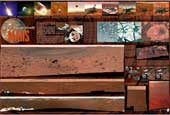
 |
|
|
|
Competition motivates, and the space race between the two twentieth century superpowers, the USSR and the USA, ended with twelve men walking on the Moon between July 1969 and December 1972. James Schefter was in the thick of it, a journalist for Texas’ Houston Chronicle. He interviewed the astronauts. He reported on the launches. He has talked with Sergei Khrushchev, the son of the USSR Party Chairman, and with Roger Launius, the NASA historian. But what is more important is that he knows how to tell a good story. The bravery of those who went out into space, the dedication of the rocket designers, the skill and attention to detail of the manufacturing engineers, the stoicism of the wives and families shines from every page. This book is a great read. You will learn a lot and will be entertained and enlightened. But much is left unsaid. Schefter glosses over the dash at the end of World War 2 to bag as much V2 hardware and personnel as possible, and the rush to build up an arsenal of Inter-Continental Ballistic Missiles. He starts with Sputnik 1 and 2, which so concerned the American people and politicians that 25 May 1961 saw John F Kennedy setting the goal, “before this decade is out, of landing a man on the Moon and returning him safely to Earth.” But 40 years later we realise that our problem arises with the definite article. ‘The’ race. There has only been one. When the USA won, in 1969, both sides stopped trying. They did not race again. The big rockets were abandoned. Travel between one astronomical body and another ceased. Human space travel became confined to low Earth orbit. In 1969 it might have been “one giant leap for mankind” but who would have thought that we would give up so soon after that. David W Hughes |
|
|
|
2009 Yearbook This 132-page special edition features the ultimate observing guide for 2009, a review of all the biggest news stories of 2008, in depth articles covering all aspects of astronomy and space missions for 2009, previews of International Year of Astronomy events and much, much more. This 132-page special edition features the ultimate observing guide for 2009, a review of all the biggest news stories of 2008, in depth articles covering all aspects of astronomy and space missions for 2009, previews of International Year of Astronomy events and much, much more.Infinity Rising  This special publication features the photography of British astro-imager Nik Szymanek and covers a range of photographic methods from basic to advanced. Beautiful pictures of the night sky can be obtained with a simple camera and tripod before tackling more difficult projects, such as guided astrophotography through the telescope and CCD imaging. This special publication features the photography of British astro-imager Nik Szymanek and covers a range of photographic methods from basic to advanced. Beautiful pictures of the night sky can be obtained with a simple camera and tripod before tackling more difficult projects, such as guided astrophotography through the telescope and CCD imaging.Exploring Mars  Astronomy Now is pleased to announce the publication of Exploring Mars. The very best images of Mars taken by orbiting spacecraft and NASA's Spirit and Opportunity rovers fill up the 98 glossy pages of this special edition! Astronomy Now is pleased to announce the publication of Exploring Mars. The very best images of Mars taken by orbiting spacecraft and NASA's Spirit and Opportunity rovers fill up the 98 glossy pages of this special edition!Mars rover poster  This new poster features some of the best pictures from NASA's amazing Mars Exploration Rovers Spirit and Opportunity. This new poster features some of the best pictures from NASA's amazing Mars Exploration Rovers Spirit and Opportunity. |
||||||||||||||||||||||||